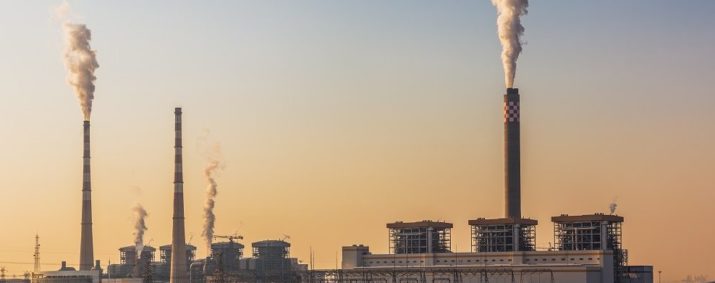
Cap Setting and Strict Compliance Enforcement Will be Critical for Chinese Emissions Trading Scheme

This is part of our special feature on Europe-China Relations.
Introduction
At the end of last year, the Chinese government approved plans for a national emissions trading scheme. While many of the details are still in the works, the biggest carbon emitter’s commitment to set up carbon markets nationwide has important implications for global climate mitigation. This policy brief draws on important lessons learned from European carbon markets, particularly for policy design, and applies it to the Chinese context. No market is perfect, but if the Chinese government gets the reduction target (= “cap”) right and takes a strong stance on compliance enforcement, this emissions trading scheme will set new standards – not least as it encourages other governments to follow China’s leadership on climate change.
The World Bank’s latest report on carbon pricing from November 2017 could not be clearer about the fact that more and more jurisdictions at national, subnational, and regional levels are putting a price on carbon.[1] By now, 42 national policies use carbon pricing in the form of either carbon taxes or emissions trading schemes, covering one seventh of global greenhouse gas emissions. This trend is likely to quickly pick up pace over the next couple of years, because more than 80 countries mention carbon pricing as an instrument to meet their national climate pledges under the Paris Agreement – essentially doubling current numbers.
These policies and laudable new carbon pricing initiatives however pale in comparison to China’s proposal to introduce a nationwide emissions trading scheme. After piloting emissions trading in seven regions (Beijing, Chongqing, Shanghai, Shenzhen, Tianjin as well as Hubei and Guangdong provinces) for a couple of years, China’s National Development and Reform Commission (NDRC) gave green light in December 2017 to roll out emissions trading across the entire nation. Many technical details are still in the making, but we know that Chinese carbon markets, in a first instance, will cover roughly 1,700 companies from the power sector.[2] As the power sector accounts for about 3.3 billion tons of carbon emissions annually, this translates to regulating a third of the country’s annual emissions of 10.3 billion. Just for comparison, the largest carbon market to date, the European Union Emissions Trading Scheme (EU ETS) covers emissions from more than 11,000 sources across several sectors, primarily power generation, heavy industry and aviation, for a total of 1.75 billion tons of covered carbon emissions in 2016.[3] Although some were disappointed over the Chinese market’s limited scope on utilities alone, the market would still be roughly twice as large as the European equivalent. The World Bank further estimates that once the Chinese market is up and running the share of global greenhouse gas emissions that come with a price tag would increase by 50 percent.[4] This means that one out of every four tons of emitted carbon will be covered either by emissions trading or a carbon tax.
How Does Emissions Trading Work?
Emissions trading is not a new idea.[5] However, for regulating carbon emissions, it gained widespread prominence in the form of the Kyoto Protocol’s flexible mechanisms.[6] [7] It is an appealing policy as, at least on paper, what needs to be done is straightforward. In its “cap-and-trade” version, we can distinguish four phases for analytical clarity: First, a policymaker sets an upper limit on how many carbon emissions are allowed during a given time period. This limit is called the “cap”, which determines the scarcity in the market and hence the carbon price; higher, more generous caps translate into lower prices, and lower, more ambitious caps translate into higher prices. Second, carbon allowances, which transfer the pollution right to regulated firms, are handed out; these allowances can be distributed for free (“grandfathering”) or can be sold through auctions. Whatever the allocation mechanism, the number of allowances has to equal the emission threshold set by the cap. Next, regulated firms can trade allowances on the market. Finally, after a certain review period, each regulated firm must hold a sufficient number of allowances to cover its carbon emissions. Otherwise, they face penalty payments.
Emissions trading is appealing for two reasons. First, carbon reductions take place where they can be obtained at the lowest cost. Firms whose marginal cost of reducing carbon is lower than the market price will sell excess allowances to those facing high abatement costs, making emissions trading a cost-effective policy. This is what economists refer to as static efficiency.[8] Second, emissions trading is also said to be dynamically efficient if the underlying legislation ensures long-term political support. Whenever firms face regulatory certainty for years to come, pricing carbon triggers investment in abatement technology to reduce carbon dependence in business operations. Decreasing the cap in a predictable way over time to signal political commitment to carbon regulation strengthens this incentive.[9]
Politically, emissions trading is sometimes praised as a fairly “hands-off” regulatory instrument as considerable action rests with the market instead of the policymakers. In addition, Hahn and Stavins argue that what they call the “independence property” allows for a government to set the cap and leave the allocation of allowances to the political process.[10] This is a useful feature of cap-and-trade instruments as it ensures – at least under some conditions – that any allowance allocation that is compatible with the cap and gathers sufficient political support is cost-effective. That said, Markussen and Svendsen and Pinske document considerable lobbying and rent-seeking efforts to shape the institutional design of European carbon markets.[11] [12]
Lessons Learned from Europe for China’s Carbon Market
The EU ETS, which started trading in 2005 and is in its third period (2012-2020) right now, has come a long way over the last decade.[13] Various aspects of the policy have carefully been analyzed,[14] [15] but this brief focuses on two issues that deserve particular attention from a political economy perspective: cap setting and compliance enforcement are central to the effective functioning of carbon markets. In that sense, these aspects will also prove critical for the design and success of the national Chinese policy.
As mentioned above, in designing carbon markets, cap setting refers to the question of how many emissions the policymaker wants to allow. The cap determines the scarcity in the market and hence the carbon price. Setting the cap too high leads to overallocation and drives down the price, which undermines the effectiveness of emissions trading for reducing carbon emissions. On the other hand, setting a too ambitious cap imposes high regulatory cost, driving down firm profits and international competitiveness. Although the empirical evidence for such effects, for instance, in the EU market is mixed,[16] setting the right cap is not only a political balancing act, but also comes with informational challenges.
Without sufficient information about baseline emissions, the threat of overallocation looms large. EU markets have seen prices tumble in its first trading period from around 30€ in July 2005 to 15€ only four days later once market participants realized that most firms were issued more allowances than they needed to cover their emissions.[17] Prices have been low ever since, currently hovering at 13€, both because of overallocated permits and low demand for allowances during the 2007/08 economic crisis.[18] In a far-reaching reform of carbon markets, the European Commission deferred auctioning of 900 million allowances to 2019/2020[19] and a Market Stability Reserve, operative from 2019, was set up to absorb excess allowances if necessary.[20] All these efforts were needed because the European Union rushed into setting up a carbon market in only two years,[21] possibly underestimating the technical complexity of the to-be-gathered information and the reliance on information provided by regulated firms.[22] Capacity building for measurement reporting, and verification of baseline emissions is a key contributing factor to the success of cap-and-trade carbon markets. In the EU ETS only one national registry was operative at the start of the scheme in January 2015.
With the design of seven pilot programs, the Chinese approach to rolling out a nationwide emissions trading scheme seems more principled. However, upon closer inspection this has not necessarily been the case. The pilot schemes were announced in 2011 with an expected launch in 2013, squeezing the schedules to a comparably short time frame as in the EU ETS. Moreover, the seven pilots are local and independent markets.[23] The lack of central coordination through the NDRC makes the institutional design of the schemes incomparable and incompatible across the seven regions as there is substantial variation in central aspects of the policies.[24] This limits the extent to which insights from the pilot schemes can inform the rules of the national carbon market. Cap setting will thus remain a challenge for the Chinese administration and if only because most of the pilots’ caps were determined to be consistent with development priorities and economic growth plans rather than with greenhouse gas reduction targets.[25] Considerable harmonization and national coordination is needed here. Failure to set an effective cap might jeopardize the success of China’s national carbon market and risks losing international credibility as a climate leader if the cap turns out not to be ambitious enough. The cautious and phased approach China has been taking is promising however. The recent creation of the new Ministry of Ecology and Environment, which is now responsible for the development of the national emissions trading scheme, seems to recognize the need for better coordination and central capacity building. These political decisions are compatible with the country’s ambition to install a fully operational carbon market for its power sector by 2020.[26]
Enforcement of non-compliance is the second key political lever for the effectiveness of any emissions trading scheme, including the Chinese one. Without it, regulated companies do not have to fear penalties when they hold too few allowances, which undermines the market mechanism and distorts efficient pricing.[27] Moving from effective enforcement in the pilot schemes to enforcement on a national scale may prove difficult, purely as a result of the increased number of to-be-regulated firms. “Strong ‘buy-in’ by local DRCs [Development and Reform Commissions]” will be essential,[28] but stringent enforcement might not be in the local policymakers’ interests if this puts local firms and regional economies under pressure.[29] It hence comes as no surprise that compliance rates in pilot carbon markets, where local authorities tended to overallocate allowances to ease off industrial opposition, were high. With a more stringent national cap that reflects municipal and provincial interests less well enforcing compliance can become a major political challenge. In the EU ETS, where for some time member states were tasked to oversee enforcement, non-compliance challenged the effectiveness of EU carbon markets.[30]
Central enforcement must remain strong to ensure emissions trading is a successful policy. Recent reports suggest that the Chinese government is taking strong action to ramp up environmental enforcement, fueled by a change in the country’s Environmental Law.[31] In his October speech to the 19th Party Congress, President Xi Jinping left little doubt about the importance of environmental protection and the “harmony between humankind and nature.” Considerably tightened air pollution targets in the 13th Five-Year Plan, 2016-2021, promise to be good news for non-compliance enforcement in carbon markets, too.[32] This strengthened stance on environmental protection reflects the country’s social and economic transformation towards more sustainable growth and green innovation.[33] Market-based carbon regulation is one pillar in this new development strategy and promises to ensure strict non-compliance enforcement. Whether the Chinese government will continue its strict enforcement stance as the cap tightens and carbon prices increase is currently an open question.
Signaling Effect
Cap setting and non-compliance enforcement will both bring with them political challenges for setting up Chinese carbon markets. Much remains to be seen in the years to come as we gain greater clarity about the key features of what will then be the largest carbon market worldwide. Chinese leadership is impressive not least because it reinvigorates ambitions to price carbon. The pressure it builds for other countries to also adopt carbon markets could very well result in a diffusion of similar policies across the globe. Australian companies are already wary about how a Chinese carbon market might affect their carbon-intensive exports.[34] Notwithstanding design differences in carbon markets,[35] the real power of carbon markets can only be seized once we move the discussion away from whether to set up carbon markets to how to best link them.[36] Although linking the Chinese market, which is built around an intensity target, to other existing markets, which are built around absolute reduction targets, will be a challenge, the Chinese emissions trading scheme is an important step towards more integrated global carbon markets in the long run.
Policy Recommendations
First, cap setting is critical for the effective functioning of carbon markets as it determines the market price. Before determining a cap, transparent and consistent rules about measurement, reporting, and verification of baseline emissions are needed to minimize the threat of overallocation.
Second, non-compliance enforcement is another important political lever for the success of carbon markets. Delegating monitoring and enforcement away from the central government risks weak enforcement incentives for local policymakers. Coordinating central and local efforts, policies should be designed in ways to make enforcement incentive-compatible at the local level.
And finally, to facilitate the diffusion of carbon markets, market designs should be coordinated across implementing jurisdictions to unlock the full potential of carbon markets by integrating them into a global market. In view of claims from more than 80 national pledges under the Paris Agreement, coordinated efforts over some basic design aspects (as promoted in Article 6 of the Paris Agreement) would ensure compatible policies in the long run, while giving countries sufficient flexibility in the short run.
Patrick Bayer is Lecturer in International Relations at the University of Glasgow and Director of MSc/MRes programmes in International Relations. He is also a Fellow at the Initiative for Sustainable Energy Policy (ISEP), Johns Hopkins School of Advanced International Studies (SAIS) and Associated Researcher at the Center for Political Economy of Reforms at the University of Mannheim. His research focuses on central questions in international cooperation and the political economy of environmental and energy politics. His work has been published for example with the Journal of Politics, Journal of Conflict Resolution, and Science Advances and a co-authored book on energy poverty titled “Escaping the Energy Poverty Trap: When and How Governments Power the Lives of the Poor” is forthcoming with MIT Press in October 2018.
Note: This post is a reprint and was originally published as an Initiative for Sustainable Energy Policy (ISEP) policy brief.
[1] World Bank. 2017. “State and Trends of Carbon Pricing 2017.” Washington, DC.
[2] “China to Launch World’s Largest Emissions Trading Scheme.” UNFCCC Announcement, 19 December 2017, available at: https://cop23.unfccc.int/news/china-to-launch-world-s-largest-emissions-trading-system
[3] Verified emissions data from the European Energy Agency’s “EU Emissions Trading System (ETS) data viewer” available at: https://www.eea.europa.eu/data-and-maps/dashboards/emissions-trading-viewer-1
[4] World Bank. 2017. “State and Trends of Carbon Pricing 2017.” Washington, DC, p.11.
[5] Ellerman, Denny A., Paul L. Jaskow, Richard Schmalensee, Juan-Pablo Montero, and Elizabeth M. Bailey (eds). 2000. Markets for Clean Air: The U.S. Acid Rain Program. New York, Cambridge University Press.
[6] UNFCCC. 1998. “Kyoto Protocol to the United Nations Framework Convention on Climate Change.”
[7] The Kyoto Protocol’s three flexible mechanisms comprise emissions trading in the form of two offsetting instruments, which became known as “Joint Implementation” (Article 6) and the “Clean Development Mechanism” (Article 12), and a cap-and-trade scheme (Article 17), which is discussed here.
[8] Freeman, Jody, and Charles D. Kolstad (eds). 2006. Moving to Markets in Environmental Regulation: Lessons from Twenty Years of Experience. Oxford, Oxford University Press.
[9] Hansjürgens, Bernd (ed). 2010. Emissions Trading for Climate Policy: US and European Perspectives. New York, Cambridge University Press.
[10] Hahn, Robert W., and Robert N. Stavins. 2011. “The Effect of Allowance Allocations on Cap-and-Trade System Performance.” Journal of Law and Economics 54(4): 267-294.
[11] Markussen, Peter, and Gert T. Svendsen. 2005. “Industry Lobbying and the Political Economy of GHG Trade in the European Union.” Energy Policy 33(2): 245-255.
[12] Pinske, Jonatan. 2008. “The Implementation of Emissions Trading in Companies.” In: Antes, Ralf, Bernd Hansjürgens, and Peter Letmathe: Emissions Trading: Institutional Design, Decision Making and Corporate Strategies. New York Springer, 193-208.
[13] The pilot trading phase (2005-2007) was launched deliberately early to ensure a functioning system is up and running during the second trading phase (2008-2012), which was aligned with the Kyoto Protocol’s commitment period. The current trading phase runs from 2013-2020, to be followed by phase 4 (2021-2030). See the “EU ETS Factsheet” for details, which is available here: https://ec.europa.eu/clima/sites/clima/files/factsheet_ets_en.pdf
[14] Ellerman, Danny A., Barbara K. Buchner, and Carlo Carraro (eds). 2007: Allocation in the European Emissions Trading Scheme: Rights, Rents, and Fairness. New York, Cambridge University Press.
[15] Ellerman, Danny A., Frank J. Convery, Christian de Perthuis, and Emilie Alberola. 2010. Pricing Carbon: The European Union Emissions Trading Scheme. New York, Cambridge University Press.
[16] Martin, Ralf, Mirabelle Muûls, and Ulrich J. Wagner. 2016. “The Impact of the European Union Emissions Trading Scheme on Regulated Firms: What is the Evidence after Ten Years?” Review of Environmental Economics and Policy. 10(1): 129-148.
[17] Alberola, Emilie, Julien Chevallier, and Benoît Chèze. 2008. “Price Divers and Structural Breaks in European Carbon Prices 2005-2007.” Energy Policy 36(2): 787–797.
[18] EUA spot price for current period, traded at eex in Leipzig on 7 May 2018, available here: https://www.eex.com/en/market-data/environmental-markets/spot-market/european-emission-allowances#!/2018/05/07
[19] See Commission Regulation (EU) No 176/2014 for legislation, available here: http://eur-lex.europa.eu/legal-content/EN/TXT/?uri=uriserv:OJ.L_.2014.056.01.0011.01.ENG
[20] See Decision (EU) 2015/1814 of the European Parliament and the Council for legislation, available here: http://eur-lex.europa.eu/legal-content/EN/TXT/?uri=uriserv:OJ.L_.2015.264.01.0001.01.ENG
[21] Ellerman, Danny A., Barbara K. Buchner, and Carlo Carraro (eds). 2007: Allocation in the European Emissions Trading Scheme: Rights, Rents, and Fairness. New York, Cambridge University Press.
[22] Betz, Regina, and Misato Sato. 2006. “Emissions Trading: Lessons Learnt from the 1st Phase of the EU ETS and Prospects for the 2nd Phase.” Climate Policy 6(4): 351-359.
[23] Pang, Tao, Li Zhou, and Maosheng Duan. 2015. “Linking China’s Emissions Trading Pilot Schemes.” Chinese Journal of Population Resources and Environment 13(3): 87-106.
[24] Kong, Bo, and Carla Freeman. 2013. “Making Sense of Carbon Market Development in China.” Carbon and Climate Law Review 7(3): 194-212.
[25] Swartz, Jeff. 2016. “China’s National Emissions Trading System: Implications for Carbon Markets and Trade.” ICTSD Global Platform on Climate Change, Trade, and Sustainable Energy. Issue Paper No. 6.
[26] ICAP. 2018. “Emissions Trading Worldwide. ICAP Status Report.” Berlin, International Carbon Action Partnership, p.18f.
[27] Freeman, Jody, and Charles D. Kolstad (eds). 2006. Moving to Markets in Environmental Regulation: Lessons from Twenty Years of Experience. Oxford, Oxford University Press.
[28] Swartz, Jeff. 2016. “China’s National Emissions Trading System: Implications for Carbon Markets and Trade.” ICTSD Global Platform on Climate Change, Trade, and Sustainable Energy. Issue Paper No. 6, p.18.
[29] Liu, Zhu. 2016. “China’s Carbon Emissions Report 2016: Regional Carbon Emissions and the Implication for China’s Low Carbon Development.” Harvard Kennedy School Belfer Center Report, October 2016.
[30] Bayer, Patrick. 2018. Firm Compliance with Regulation from International Treaties: Evidence from European Carbon Markets, 2005-2012. University of Glasgow Working Paper.
[31] “China Cleans Up Its Act on Environmental Enforcement.” The Diplomat, 9 December 2017, available at: https://thediplomat.com/2017/12/china-cleans-up-its-act-on-environmental-enforcement/
[32] “13th Five-Year Plan For Economic and Social Development of the People’s Republic of China.” Available at: http://en.ndrc.gov.cn/newsrelease/201612/P020161207645765233498.pdf
[33] ICAP. 2018. “Emissions Trading Worldwide. ICAP Status Report.” Berlin, International Carbon Action Partnership.
[34] “China’s Emissions Trading Scheme Puts Australian Companies on Notice.” The Guardian. 3 October 2017, available at: https://www.theguardian.com/sustainable-business/2017/oct/04/chinas-emissions-trading-scheme-puts-australian-companies-on-notice
[35] Wettestad, Jorgen, and Lars H. Gulbrandsen (eds). 2018. The Evolution of Carbon Markets: Design and Diffusion. London, Routledge.
[36] Ranson, Matthew, and Robert N. Stavins. 2016. “Linkage of Greenhouse Gas Emissions Trading Systems: Learning from Experience.” Climate Policy 16(3): 284-300.
Published on June 5, 2018.




